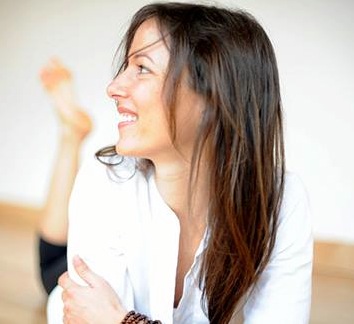Making Time

 I am on the road so often that the idea of a daily 90-minute yoga practice sounds luxurious, like a distant dream. Even when I am home, my work schedule is so heavy, that getting myself to a mat – to find my own practice – is a challenge in itself. With this in mind, I remember my teacher’s words: “Discipline is in the first step.” Taking that first step to get somewhere, to do something, is the most important and crucial one.
I am on the road so often that the idea of a daily 90-minute yoga practice sounds luxurious, like a distant dream. Even when I am home, my work schedule is so heavy, that getting myself to a mat – to find my own practice – is a challenge in itself. With this in mind, I remember my teacher’s words: “Discipline is in the first step.” Taking that first step to get somewhere, to do something, is the most important and crucial one.
More often than not we commit ourselves to a heavily laden schedule and a million obligations, and when we get a breath of freedom, we are generally overwhelmed with exhaustion.
Before even thinking about getting to a yoga class, we must stop ourselves. With the running around we do, yoga ends up being one more thing on an ever-growing, never-ending to-do list. And if you’re anything like me, unmarked items only contribute to a generalized feeling of guilt that I personally find harder to shake off than anything else. But, realistically, how do we remain connected to ourselves so we can be our best each day even when time is not on our side?
The beauty of yoga is that it is not exclusive to a person or place. And there are a few ways that you can take each day to get your practice in:
- Instead of hitting snooze and going back to sleep in the morning, do yoga for 5-10 minutes in bed. Consciously deepen your breath and do several poses laying on your back, like legs extended to the ceiling, twists and happy baby. When your feet meet the ground, fold over your legs, in a supported forward bend with your arms outstretched.
- Practice breathing while getting to work. Focus on breathing deeply into each area of your torso: abdomen, mid-chest and upper-chest. Fill up on the inhalation from the bottom up, and then exhale from the top down. If you have a chance to walk to work, try and match every in-breath and every out-breath with each step you take. You can control how fast or how slow you walk/breathe.
- Remember that practicing yoga isn’t just about the poses. You can train your mind to be present at any time: walking the dog; peeling an apple; washing the dishes; talking with your friend. Notice every detail in everything you do, and practice being absolutely present in every moment.
- Say no to an obligation so you can say yes to a yoga class (or home practice).
- If you have a family, arrange a set time each week to recharge yourself—and let everyone know about it. This will benefit everybody in the long run even if it seems to be a short-term inconvenience.
- Even if you think you don’t have time for anything else, you have time for this: Viparita Karani/Legs Up the Wall Pose. All you need is a blanket and a wall. You can use your sticky mat to help prevent the blanket from sliding on a slippery
floor. Stay in the pose for five to ten minutes.
Viparita Karani/Legs Up the Wall Pose
1. Place your mat perpendicular to an open wall space, with a folded blanket on the mat close to the wall.
2. Sit on the blanket with one of your hips on the wall. Prop your arms behind you and swing your legs up the wall. Scoot forward until your glutes and the back of your legs are supported.
3. Curl the toes gently toward your face, reaching your heels high, and then relax the legs. If it feels a little tight around your hamstrings, bend your knees a little. Extend your arms out to each side like airplane wings, with your palms facing up.
4. Breathe openly into the chest for five to 10 minutes. Your legs may tingle, but if at any point you feel discomfort, leave the pose carefully by folding your knees back into your chest and rolling onto one side before coming up to sit.
5. To come out of the pose, walk your feet down the wall and gently roll onto your side. Notice the rush of sensation into the legs and tune into your heart center for a few breaths. Use your arms to press yourself back up to seated. Enjoy.

